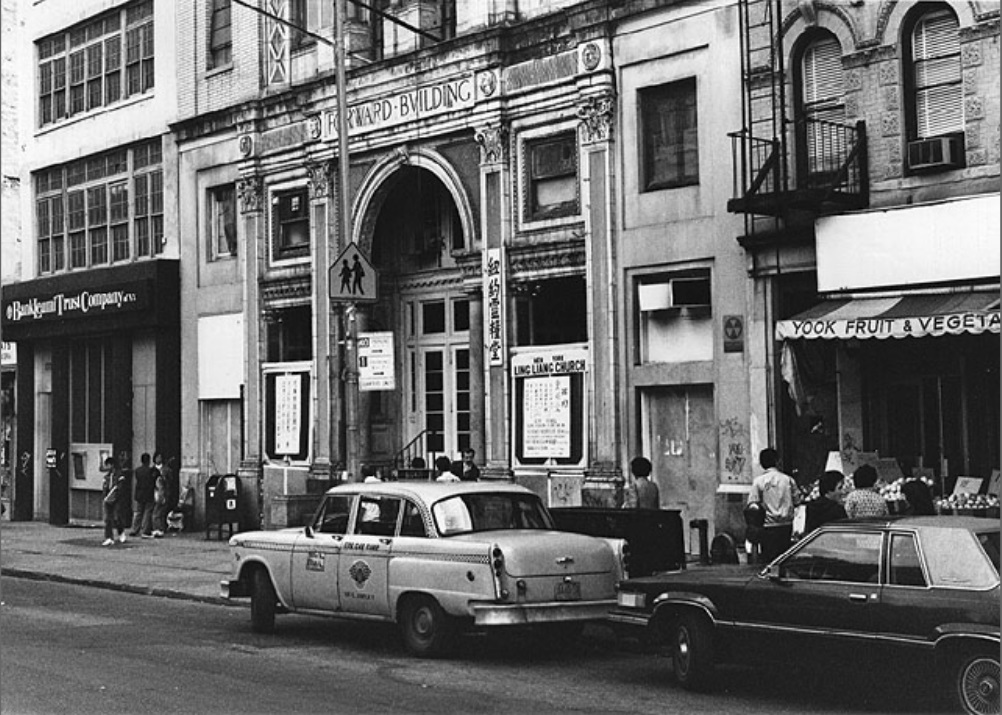Of course the Lower East Side of New York City holds a significant place in the history of Jewish immigration. This bustling neighborhood was a melting pot of cultures, languages, and traditions, with Yiddish serving as the prominent language. The stories and struggles of these immigrants were brought to life through the iconic advice column of the Yiddish newspaper Forverts, known as A Bintel Brief.
The Rise of the Lower East Side
In the late 19th and early 20th centuries, waves of Jewish immigrants from Eastern Europe arrived on the shores of America, seeking a better life and escaping persecution. Many of them settled in the Lower East Side, a neighborhood teeming with tenement buildings, bustling markets, and a vibrant cultural scene. Here, they established a tight-knit community, holding on to their traditions and language amidst the challenges of acculturation.
The Power of the Yiddish Press

The Yiddish newspaper Forverts (The Forward), founded in 1897 by Yiddish-speaking socialists, became a prominent voice of the Lower East Side Jewish community. Headquartered at 175 E. Broadway, Forverts boasted a circulation that reached over 275,000 at its peak, and played a crucial role in providing news, commentary, and a sense of community to its readers. A Bintel Brief, the advice column introduced by founder Abraham Cahan in 1906, became a beloved and influential feature of the newspaper.
Born into an Orthodox family in the Russian Empire, Cahan came from a long line of religious leaders but fell under the influence of socialist thought as a young man. He worked with several groups which sought to overthrow the czar, but decided to emigrate to America while in his early 20s. It is here on the Lower East Side that Cahan decided to spread his socialist philosophy and beliefs.
A Bintel Brief: An Outlet for Immigrant Concerns
A Bintel Brief, meaning “A Bundle of Letters” in Yiddish, became a lifeline for Jewish immigrants grappling with the challenges of their new lives in America. The column invited readers to share their stories, seek advice, and find solace in the shared experiences of others. It covered a wide range of topics, including family conflicts, economic struggles, religious dilemmas, and the complexities of assimilation.
The Universal Appeal of A Bintel Brief
While A Bintel Brief represented the concerns of Jewish immigrants, its themes resonated with a broader audience. The column addressed universal issues of love, marriage, identity, and the pursuit of happiness. Readers from all walks of life, both Jewish and non-Jewish, found solace and insight in the letters and responses, making A Bintel Brief an essential part of the cultural fabric of the Lower East Side.
Stories of Love and Marriage
Love and marriage were recurring themes in A Bintel Brief, reflecting the hopes, dreams, and challenges faced by immigrants in their pursuit of happiness. Letters poured in from individuals grappling with questions of love, arranged marriages, and cultural clashes. The column provided a platform for discussions on the complexities of relationships, the role of tradition, and the pursuit of personal happiness. For example:
Dear Editor: I recently met a good girl but there is a problem. She has a dimple in her chin & people say that if someone has this their husband will die early. At first I did not believe this, but I have seen this to be true. When I meet a woman that has this dimple her husband dies early. So I don’t know if I should keep on seeing this girl — please help me.
Answer: The problem is not that a girl has a dimple on her chin, but that some people have a loose screw in their head! What genius can explain how a dimple can cause a spouse to die? Does the Angel of Death sit hiding in the dimple? It is shameful that a man brought up in America should ask such questions. Let him know that many women with dimples have lived long happy lives with their husbands.
Navigating Identity and Assimilation
For immigrants, the process of assimilation was a delicate balance between preserving their cultural heritage and embracing the opportunities of their new homeland. A Bintel Brief captured the struggles of Jewish immigrants as they navigated the tension between their old and new identities. Questions about language, religious observance, and cultural adaptation filled the pages of the column, reflecting the complexities of immigrant life on the Lower East Side.
Dear Editor: We have 5 children in my family. I am the oldest at 14 & my mother is pregnant. My father is not so well & only earns $5 a week. I do very well in school but I would like to leave so that I can help with my family’s income. My mother & father work so hard to take care of my family & the three boarders staying in our home. My mother is completely against this & wants me to stay in school & to get an education. What do you think that I should do?
Answer: The girl should stay in school. This will make your parents happier than working.
Economic Struggles and the American Dream
The Lower East Side was a microcosm of the American dream, with immigrants striving for economic success and upward mobility. A Bintel Brief became a platform for discussing the challenges faced by entrepreneurs, laborers, and business owners. Immigrants sought advice on starting businesses, finding employment, and overcoming financial hardships. The column offered guidance, empathy, and a sense of community to those grappling with economic uncertainties.
Dear Editor: I have been without a job for 6 months. I am finished with the last shirt on my back & I have nothing to do but to end my life. I get up at four in the morning to look for a job. I have no money for carfare so I walk. By the time I get there, hundreds are on line ahead of me. I spend five cents a day on food, now I can’t even do that. I have no strength to continue. I am an iron worker I can also work a milling machine & a drill press.
If I would have known this would happen I never would have come. What can I do now? Please comrades help me do not let me die this way.
Answer: We receive hundreds of similar requests daily. This person should go to 333 Eldridge St where they will not let him starve. We also ask our readers if they can find a job for this man.
The Impact of Trauma and Loss
Amidst the dreams and aspirations, A Bintel Brief also served as a platform for survivors of trauma and loss to share their stories. Letters poured in from individuals who had experienced pogroms, fires, and other tragedies. The column provided a space for healing, support, and collective mourning. It became a testament to the resilience of the immigrant community and the power of storytelling to bring about understanding and empathy.
Dear Editor: A pogrom took place in Bialystok where my old parents & a sister with three children live. Should I try to bring them here, or go there & help my brothers in their struggle? If I knew what would happen I would have never left. I was the one that always encouraged people to stay in Russia. I feel like a liar & a coward — I don’t know what to do.
Answer: If the question were asked before leaving we would advise to stay — but once someone is here we would suggest remaining. Bring over the family, & they will find many ways that can get help here.
A Legacy of Advocacy and Social Change
Beyond offering advice and support, A Bintel Brief became a platform for advocating social change. The column voiced concerns about inequality, discrimination, and the need for equal rights. It championed women’s enfranchisement, religious freedom, and respect for all individuals, regardless of their beliefs or backgrounds. A Bintel Brief embodied the spirit of activism and social justice that characterized the Lower East Side.
The Enduring Legacy of the Lower East Side
While the Lower East Side has undergone significant changes over the years, its legacy as a vibrant immigrant community lives on. The stories and struggles shared in A Bintel Brief continue to inspire and resonate with individuals seeking connection, understanding, and a sense of belonging. The Lower East Side remains a symbol of resilience, diversity, and the enduring power of community.
Conclusion
The Lower East Side of New York City holds a special place in the hearts and minds of Jewish immigrants and their descendants. A Bintel Brief, the iconic advice column of the Yiddish newspaper Forverts, captured the hopes, dreams, and challenges of this vibrant community. Through its pages, immigrants found solace, guidance, and a sense of belonging. The legacy of the Lower East Side lives on, reminding us of the power of storytelling, community, and the pursuit of a better life.
And by the way, The Forward and A Bintel Brief is still serves the community online.
*Image of 175 E. Broadway, 1980, courtesy of Alvin A. Shangold

Eric is a 4th generation Lower East Sider, professional NYC history author, movie & TV consultant, and founder of Lower East Side History Project.
